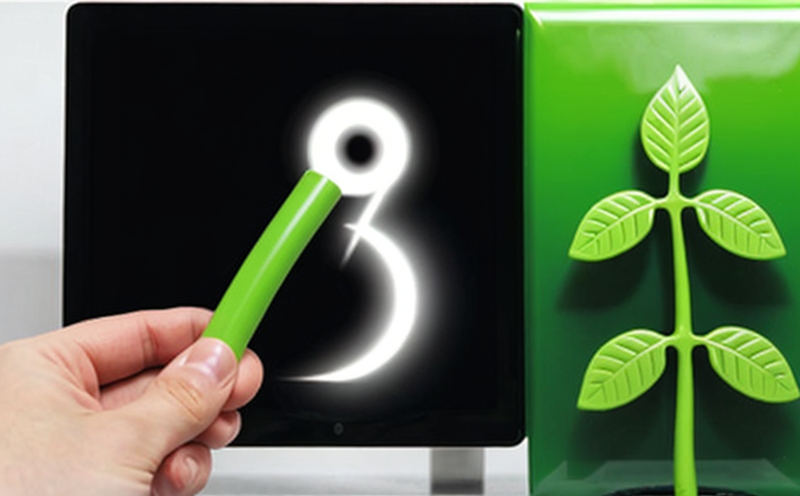EN 16798 Energy Performance of Ventilation Systems
The European Standard EN 16798:2013 specifies the methodology for assessing the energy performance of ventilation systems, particularly focusing on their contribution to overall building energy efficiency. This standard is crucial in ensuring that ventilation systems are designed and installed in a manner that optimizes energy consumption while maintaining optimal indoor air quality.
As part of broader efforts towards sustainable buildings and infrastructure, EN 16798 plays an integral role by providing a framework for quantifying the impact of ventilation systems on energy usage. This is achieved through detailed measurements and calculations that consider factors such as airflow rates, pressure drops, and heat recovery efficiency.
For quality managers and compliance officers, understanding this standard is essential to ensure that projects comply with regulatory requirements. R&D engineers can leverage EN 16798 to innovate and improve ventilation systems, enhancing their energy performance. For procurement professionals, the standard helps in selecting suppliers who meet rigorous standards for energy-efficient products.
The test involves several critical steps: first, a detailed review of system design plans is conducted to identify potential inefficiencies. Next, field measurements are taken using specialized instruments that capture real-time data on airflow, pressure, and temperature differentials. These readings are then used to calculate the overall energy performance index (EPI) for the ventilation system.
The EPI provides a comprehensive measure of how efficiently the system operates in terms of energy consumption relative to its design capacity. This metric is essential for evaluating the effectiveness of various design choices and operational strategies. Compliance with EN 16798 ensures that ventilation systems are not only functional but also contribute positively to building sustainability goals.
Implementing this standard can lead to significant cost savings by reducing energy consumption without compromising on air quality or occupant comfort. Additionally, it supports broader environmental objectives such as reduced carbon footprints and improved indoor environmental health. By adhering to EN 16798, organizations demonstrate their commitment to sustainable practices and regulatory compliance.
Real-world applications of this standard are diverse, ranging from residential developments to commercial buildings and large-scale infrastructure projects. In each case, the goal remains consistent: to ensure that ventilation systems operate at peak efficiency while minimizing energy usage. This approach not only benefits end-users through lower utility bills but also contributes positively to global sustainability efforts.
The methodology outlined in EN 16798 is robust and reliable, providing accurate assessments of ventilation system performance. It ensures consistency across different installations, allowing for meaningful comparisons between systems. This standardization is vital in promoting best practices within the industry and driving innovation towards more sustainable solutions.
Applied Standards
The application of EN 16798 is wide-ranging but primarily targets large-scale commercial buildings, institutional facilities like schools and hospitals, and other structures where energy efficiency is paramount. The standard provides a standardized approach to assessing the energy performance of ventilation systems in these environments.
Key aspects addressed by the standard include:
- Flow measurement using anemometers
- Differential pressure measurements with manometers or digital probes
- Inlet and outlet temperatures recorded via thermocouples
- Calculations of energy performance indices (EPI) based on collected data
The standard also emphasizes the importance of accurate measurement techniques to ensure reliable results. It specifies the use of calibrated instruments and trained personnel, further enhancing the credibility of test outcomes.
For those involved in construction or renovation projects, compliance with EN 16798 is not just optional but mandatory for achieving LEED certification or similar sustainability accolades. Compliance also opens doors to public funding programs designed to promote energy-efficient infrastructure.
Quality and Reliability Assurance
The quality assurance process associated with EN 16798 involves multiple layers of verification, ensuring that the assessment results are accurate and reliable. The first step is selecting suitable test equipment and personnel trained in using these devices effectively.
Calibration checks are performed regularly to maintain instrument accuracy throughout testing cycles. This ensures consistent readings across different tests conducted by various operators. Field measurements must be taken under controlled conditions, adhering strictly to the procedures outlined in the standard.
Data processing involves complex calculations aimed at deriving meaningful insights from raw measurement data. Software tools specifically designed for EN 16798 facilitate this process, allowing users to input data easily and generate reports automatically. These reports provide detailed analyses of system performance along with recommendations for improvements where necessary.
The reliability of test results is further enhanced through independent verification procedures. Third-party auditors may be engaged during major projects or when significant discrepancies arise between expected versus actual outcomes. Such audits help maintain high standards throughout the testing process, fostering trust among stakeholders.
Environmental and Sustainability Contributions
The implementation of EN 16798 contributes significantly to environmental sustainability by promoting efficient use of natural resources. By optimizing ventilation system performance, less energy is consumed during operation, leading to lower greenhouse gas emissions from power generation sources.
Incorporating sustainable design practices into new constructions or existing renovations reduces operational costs for building owners while enhancing occupant comfort and health. The standard encourages the use of renewable energy sources like solar power integrated with ventilation systems where feasible.
Adhering to EN 16798 aligns with broader international commitments towards reducing carbon footprints, including those set out by the Paris Agreement. It supports national goals for improving overall quality of life through better indoor environments and more efficient use of resources.
The standard fosters collaboration between various stakeholders involved in design, construction, operation, and maintenance phases of buildings. This collaborative approach ensures that all parties contribute towards achieving common sustainability objectives effectively.





